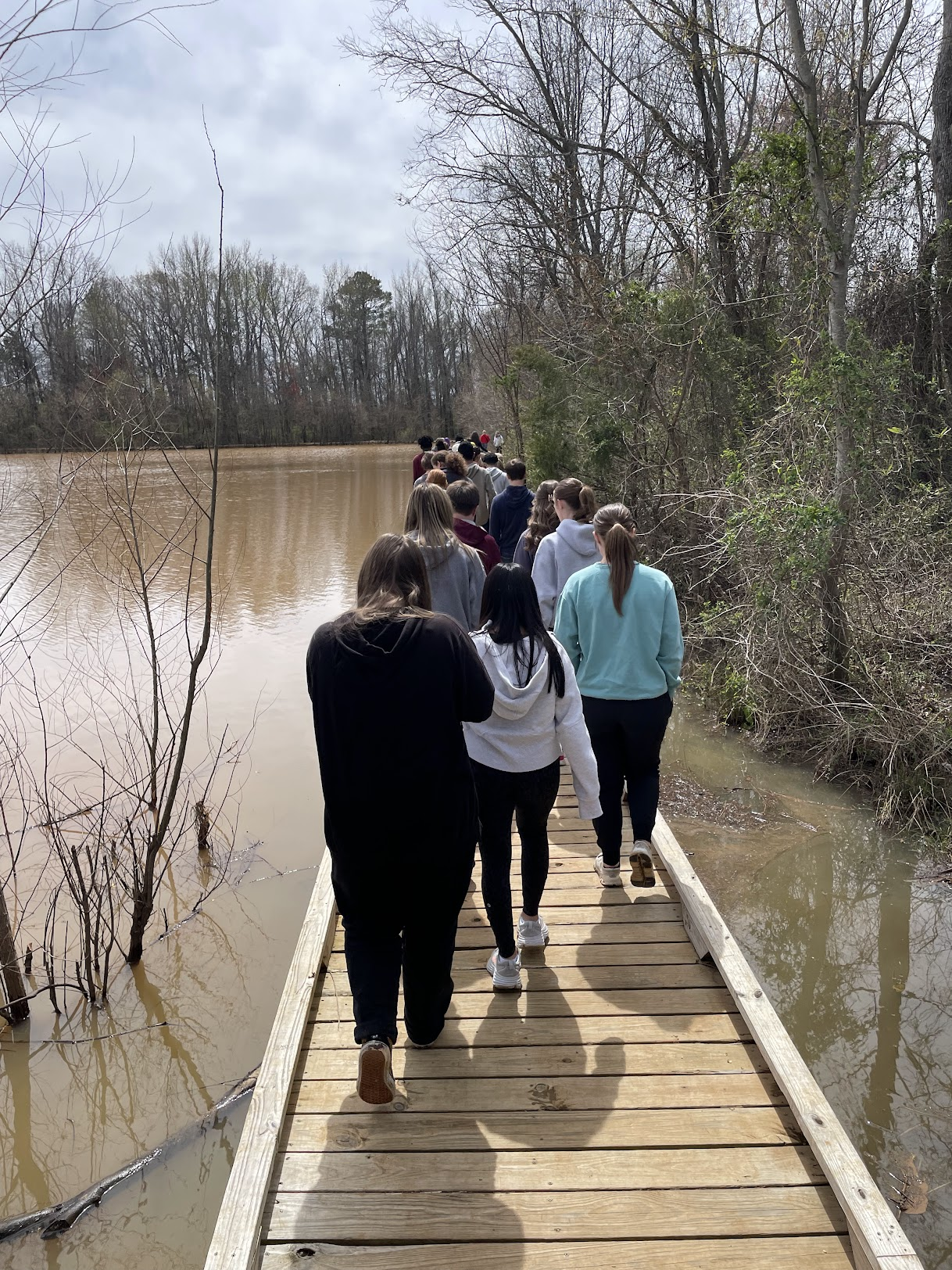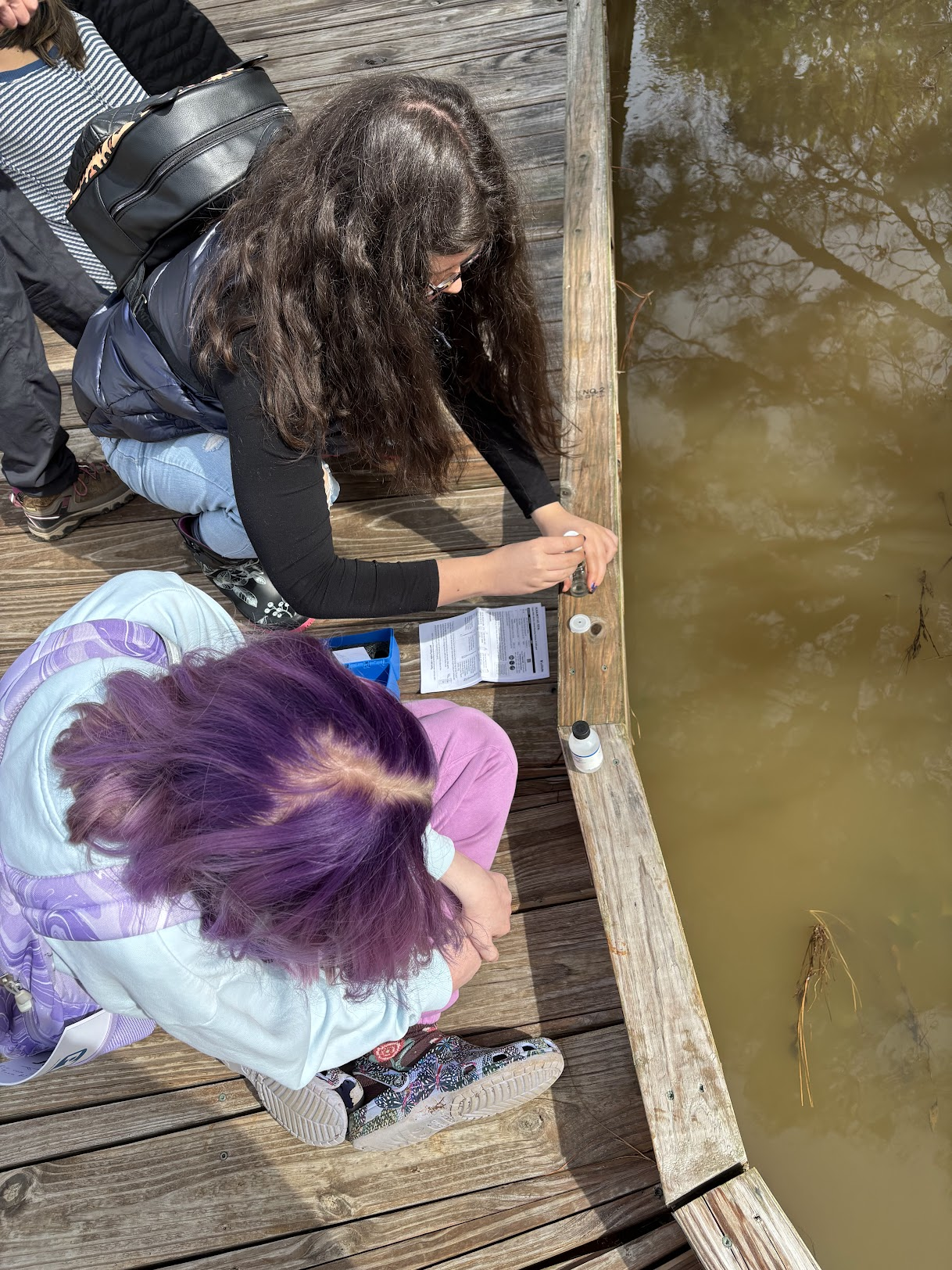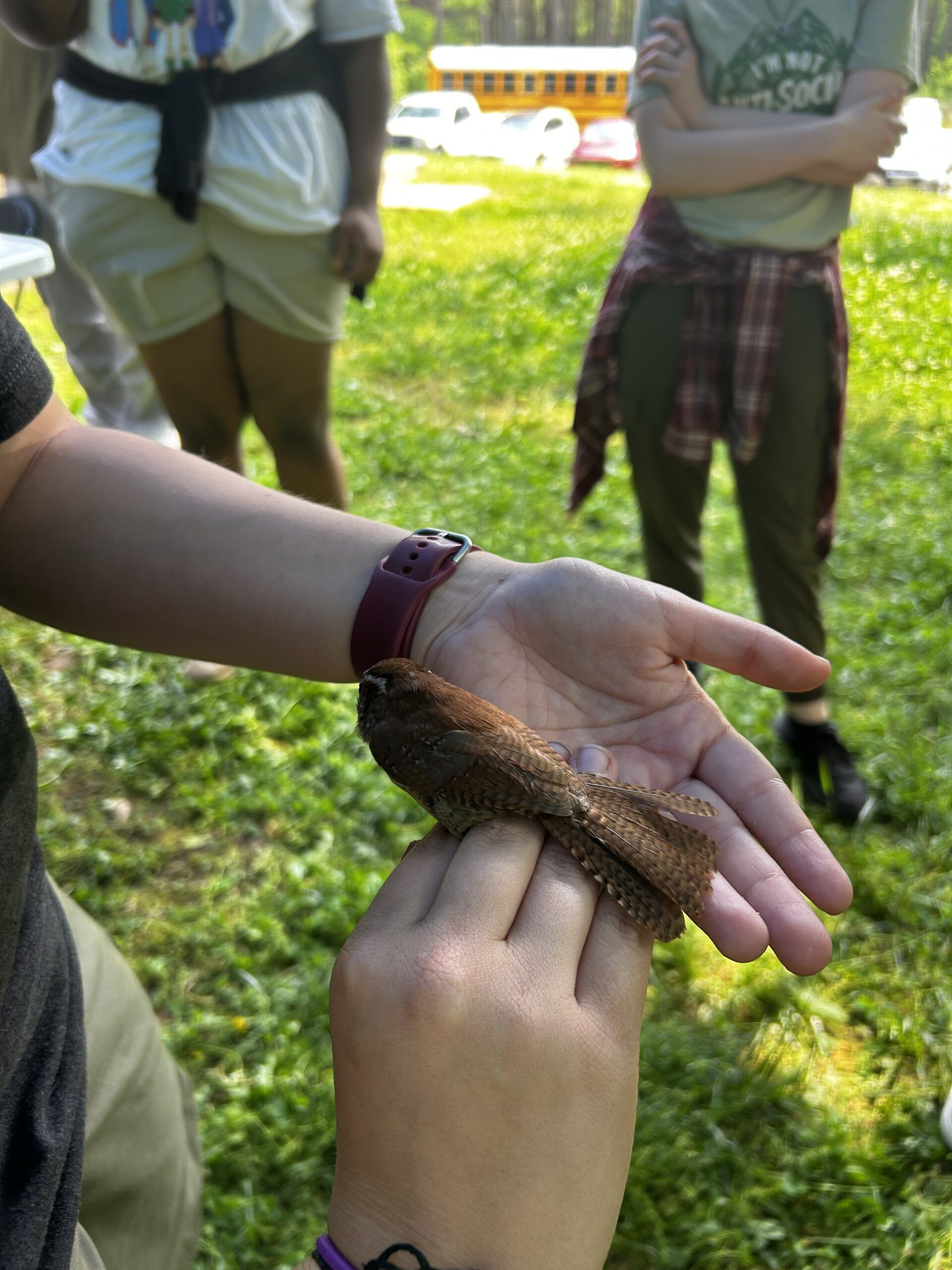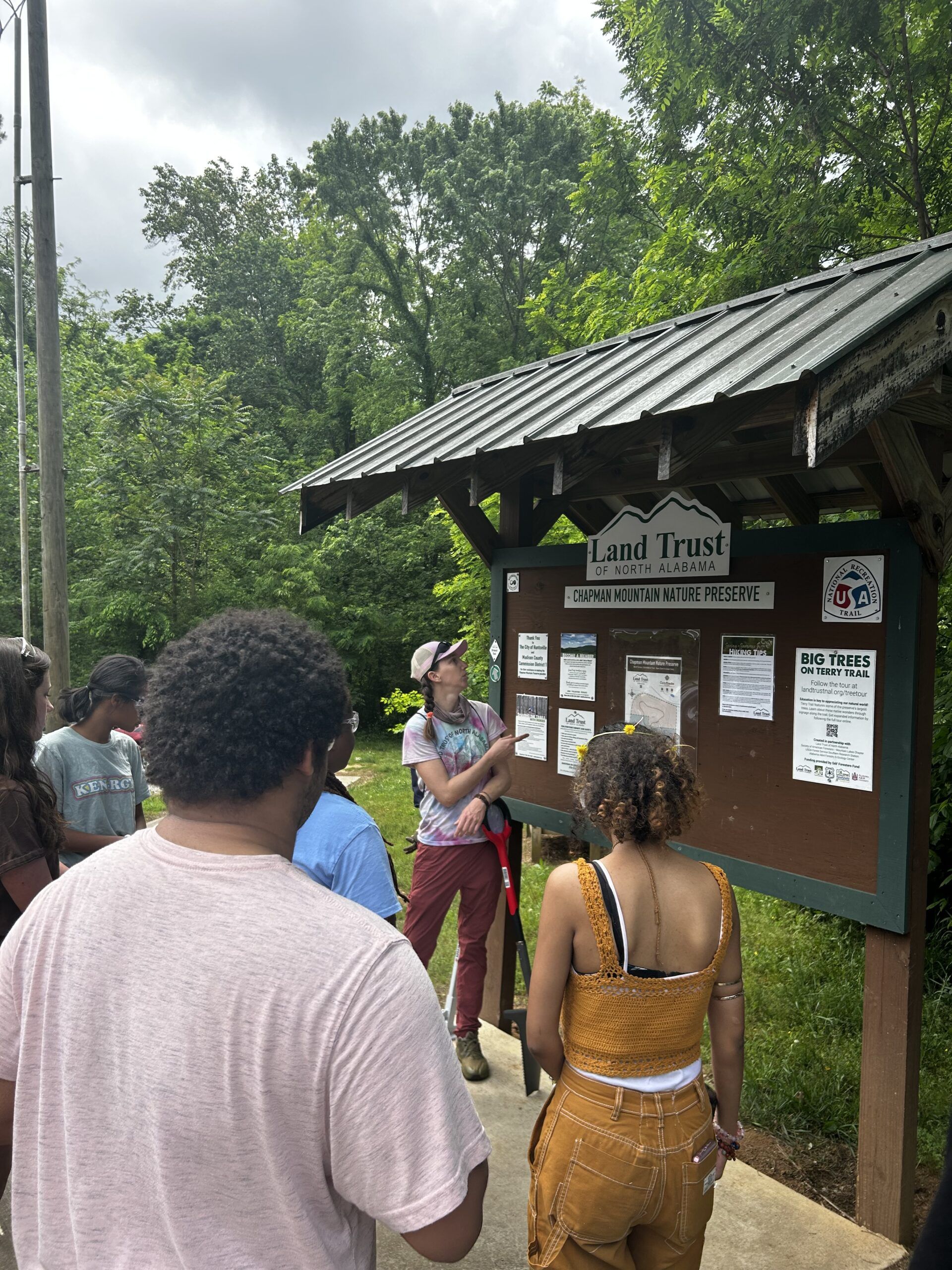This spring, we launched a new environmental education initiative aimed at equipping local high school students with real-world skills in conservation science. Through our partnership with Bob Jones High School and Lee High School, students are now engaging directly with their environment—collecting data, conducting fieldwork, and learning how science can be used to protect North Alabama’s natural spaces.
At the Land Trust of North Alabama, our mission is to preserve the region’s scenic, historic, and ecological resources through CARE—conservation, advocacy, recreation, and education. This program represents a significant step forward in our education efforts, made possible through a generous $30,000 grant from PPG.

Students from Bob Jones High School on a field trip at Harvest Square.
“Our education wing is an important way that we do community outreach,” said our Naturalist Educator, Laura Lambert, who leads the program and works closely with both schools.
This idea began during a conversation with PPG in the summer of 2024, when we discussed the growing need for environmental education tailored to high school students. From that dialogue, this hands-on, data-driven program was created—and launched officially in spring 2025.
“A lot of environmental education programs focus on younger students. However, high school students are interested in conservation and environmental advocacy, but they often don’t have a way to do that,” Laura shared.

Students from Lee High School hearing from Aaron Stiles, a native landscape designer, as they plan their campus garden to increase biodiversity.
Lee High School: Boosting Biodiversity
At Lee High School—part of Huntsville City Schools—around 25 students in the “Green Ambassadors” club are working on campus biodiversity initiatives. Using the iNaturalist app, they document and categorize species they observe around campus, contributing to citizen science while learning the principles of environmental monitoring.
“iNaturalist is a crowd-sourcing identification app that we can use in our education and conservation efforts,” Laura explained. “What’s great is that we can use data from iNaturalist to monitor our preserves and know what people are seeing at our preserves, so we can be better at conserving the life that is there.”
This semester, the students identified an area on campus with low biodiversity and created a plan for native plantings.

Students from Bob Jones High School at Harvest Square Nature Preserve performing chemical tests at Terry Pond.
Bob Jones High School: Testing Water Quality
Over at Bob Jones High School—part of Madison City Schools—approximately 50 students in AP Environmental Science classes are focusing on water quality testing and water stewardship. Their work involves both chemical and bacteriological testing, including the use of R-CARDS to measure bacterial presence in local water samples.
“R-CARDS are little pieces of paper that we can drop water samples on and incubate them at our office to see how much E. coli and other types of bacteria are in the water,” said Laura.
We’re also preparing to introduce microplastic monitoring for the 2025–2026 school year to further expand the students’ understanding of environmental challenges.
“Microplastic monitoring is a little bit more complicated. We will use special tools, called Buchner funnels, to filter water out and then look at it under a microscope,” Laura said. “But that’s just another way that this program has evolved in just one semester.”
Every visit to the schools focuses on a different topic, giving students broad exposure to the many facets of environmental science.

Students from Lee High School got to learn about Alabama A&M’s bird-banding project at a recent field trip to Chapman Mountain.
Partnerships with Local Colleges
To further support students interested in environmental careers, we’ve partnered with local colleges like Calhoun Community College and Alabama A&M University.
Calhoun faculty visit the schools to talk about post-secondary options and are currently developing a certificate program in environmental stewardship that could serve students involved in our high school program.
Meanwhile, our collaboration with Alabama A&M allows students to assist with bird-banding research at our Chapman Mountain Nature Preserve—offering a unique opportunity to participate in real conservation science.
“We don’t make decisions about environmental protections haphazardly,” Laura noted. “We’re making decisions based on data that’s being crowd-sourced through a citizen science app, like iNaturalist, or we’re making decisions based on actual field work that’s being done on our preserves.”
We’re proud of what’s already been accomplished in just one semester and are excited about what’s to come.
“We want as many schools as are willing to work with us for the 25-26 year,” Laura said. “Right now we have Bob Jones and Lee High Schools, but if we could expand that to four to six schools that we’re working with next year, we would really enjoy that.”
This program embodies our commitment to education and our belief that empowering the next generation is key to protecting North Alabama’s natural resources for years to come. To learn more about what we’re doing and how to get involved, visit our website.
